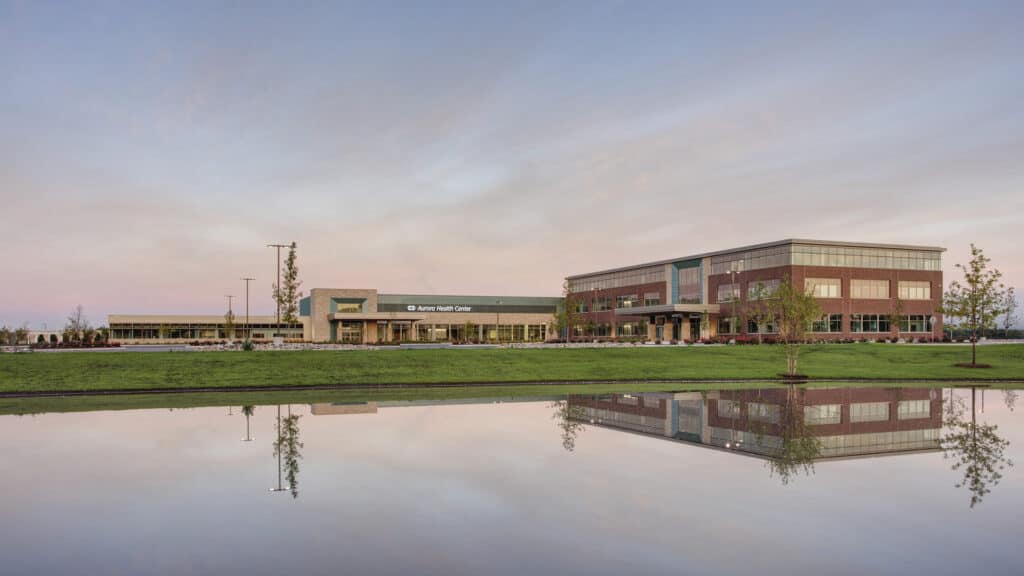Media
Aurora’s Southern Lakes combines latest technology, nature

Release Date: 05/16/2017 | MaryBeth Matzek | The Daily Reporter
The Aurora Health Center Southern Lakes center in Burlington embraces its rural setting, incorporating views of a neighboring nature preserve and its tranquil surroundings.
The 160,000-square-foot building includes a one-story ambulatory-care center with operating rooms, procedure rooms and recovery rooms. Also inside is a three-story medical office building where visitors can find a variety of medical specialists and a multi-discipline cancer center.
Outside, a healing garden–a first for Aurora–was added for patients and their relatives, who can also look out from nearby windows, said Mike Radtke, a project manager at The Boldt Co., the project’s general contractor.
“Southern Lakes is a beautiful setting that we wanted to take advantage of,” he said. “For example, the chemotherapy area overlooks the nature area, providing patients with a peaceful view.”
Aurora brought Boldt in early for the project. As planning moved forward, the general contractor secured the land and necessary construction permits.
“There was a high integration of all the key partners in the planning, design and construction process,” Radtke said.
That collaboration allowed Boldt to make use of detailed building information modeling, which helped the construction work proceed smoothly.
“We had a 13-month schedule to complete construction and the planning helped,” he said.
Like other health care centers, Southern Lakes had a multitude of specialty equipment and design considerations that had to be vetted, Radtke said.
“There is a lot that needs to be done behind the scenes with medical buildings,” he said. “For example, you need to make sure there are infection controls in place from the ventilation system to the finishes.
We also made sure there was enough room in the operating rooms for the medical booms.”
Design and construction work also had to be done in a way to accommodate future expansions, Radtke said. Construction crews faced further difficulties when the schedule had to be changed after learning the building’s windows had to be installed before its brick veneer.
“That caused a major shift in our scheduling, but we were still able to get the building enclosed before the winter, which was our goal,” Radtke said. “Our crews did a great job of helping us maintain our schedule.”


